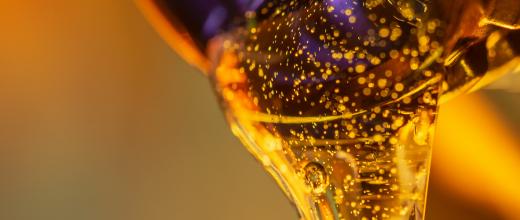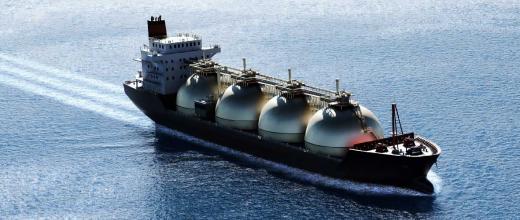14.11.2022
5 minutes of reading
Ep#4 – Capturing industrial CO2: towards greater energy efficiency | Vania Santos Moreau and Stéphane Bertholin (IFPEN)
After talking about storing CO2, now it’s time to talk about capturing it! This is a major challenge as between 5 to 7 billion tonnes of CO2 will have to be captured every year in 2050 if we want to achieve carbon neutrality. What is the state of the different capture technologies today? An overview of projects demonstrating more effective and cheaper CO2 capture technologies with our two 4th-episode guests, Vania Santos-Moreau, 3D project manager, and Stéphane Bertholin, Cheers project manager.
Points to remember
Where does the CO2 come from, and what does it have to be separated from?
It is essential to answer this question if we are to understand how to efficiently capture, meaning separating out the CO2.
Combustion is the result of the reaction of a carbon-based materials, such as methane (CH4), with the oxygen in the air (O2, comprising 20% of air). The carbon atoms combine with the air’s O2 to form carbon dioxide (CO2), and the hydrogen atoms combine with the air’s O2 to form water, in the form of vapour.
Apart from CO2, the other constituents of the gases are:
• water, which forms during combustion;
• the nitrogen (N2) in the air, which does not react during combustion. It comprises 80% of air;
• impurities: sulfur oxides, nitrogen oxides, oxygen, soot particles
How can CO2 be captured?
First-generation technologies for capturing CO2 emitted by an industrial facility continue to evolve to improve efficiency. Second-generation capture processes, post- and oxycombustion, are currently at the demonstration step. Each process has specific characteristics, applications, advantages, and drawbacks.
Post-combustion capture: the example of the DMX™ solvent
Post-combustion capture technology separates the CO2 in a gas or industrial smokes.
How?
Using a liquid solvent that absorbs the CO2, which then passes from a gaseous to liquid state. Then, as an effect of the temperature, the CO2 is freed from the liquid state and separated.
What then?
The captured CO2 is very pure. It is then conditioned and transported by pipeline or boat to a storage site. It can also be reused to make energy and chemical products, or as a resource, such as in the food industry and for construction materials.
Where can this technology be used?
The post-combustion process is intended to capture CO2 emitted by existing factories to prevent the CO2 from being released into the atmosphere, thus reducing the environmental impact of industrial processes.
A look at the DMX™ solvent
The result of 15 years of research at IFPEN, today the DMX™ solvent is being tested at the Arcelor Mittal steel plant in Dunkirk as part of the 3D project. DMX™ provides a very competitive solution in terms of energy consumption, at a time when industry needs more effective technology to reduce the costs of capturing.
And tomorrow?
Beyond that, the goal is to adapt the DMX™ procedure to other sectors: refining, waste treatment facilities, cement manufacturers, etc. These industries emit different flue gases, with varying volumes of CO2. For example, a steel manufacturing site can produce 11 Mt of CO2/year, compared to an average of 1 Mt/year for a cement manufacturer.
A few words about the 3D project
A European project financed as part of the Horizon 2020 program
Objective: demonstrate an innovative industrial CO2 capture process, the DMX™ process
0.5 tonnes of CO2 captured per hour, for more than 4,000 tonnes per year
Oxycombustion capture: the case of chemical looping combustion
Oxycombustion capture technology is based on combustion in presence of oxygen rather than air, avoiding thus the enormous quantities of nitrogen that usually dilute the CO2.
How?
A metal oxide, circulated through the reactors, provides oxygen, and only oxygen, to the combustion reactor, thus producing heat. It is similar to what red blood cells do in the human body: first, the oxide takes oxygen from the air in the reactor, like blood cells collect oxygen from our lungs, then the oxygen is circulated to another reactor to be freed, like red blood cells do in the organs that need it. The highly concentrated oxygen thus provided for combustion generates gases containing only CO2 and water vapour.
What is the result?
Water condensation makes it possible to quite cheaply obtain concentrated CO2 that can then be shipped for use or put into long-term storage.
When will it be usable?
This process is paving the way for a new generation of thermal power plants specifically adapted for CO2 capture, which will enable the production of electricity and vapour or supply urban heating networks using conventional fuels, but without emitting greenhouse gases. Oxycombustion technology can produce emissions with very high concentrations of CO2 on its own, meaning without the need for additional capture steps.
A closer look at the chemical looping combustion process
The chemical looping combustion process (CLC) is oxycombustion technology that has been co-developed by IFPEN and TotalEnergies. Its industrial potential is currently being demonstrated as part of the Cheers project, which will support the construction of the biggest demonstration unit in the world.
A few words about the Cheers project
A joint Chinese- European project co-financed by the European Horizon 2020 program and the Chinese Ministry of Science and Technology
Objective: confirm the performance of the chemical looping combustion process and lay the groundwork for its implementation in electric and biomass power plants
13 years of research conducted by IFPEN and TotalEnergies from the laboratory stage to the pilot phase
A 10-kW pilot unit in the IFPEN laboratories and a demonstrator with a 4MW capacity being constructed in China
And tomorrow?
The use of biomass as fuel in our CLC process could contribute to making further progress towards carbon neutrality. Why? Because the CO2 contained in the plant matter used as fuel was originally assimilated by the plant for photosynthesis. Capturing and storing this CO2 means removing CO2 from the atmosphere. We can then speak of negative emissions.
The CLC can also be used in power plants that operate with recovered raw materials, such as cardboard and plastic packaging that cannot be recycled. It is a way to use or reuse biomass and waste with a positive impact on the environment.








